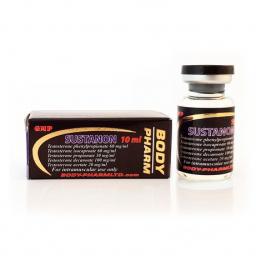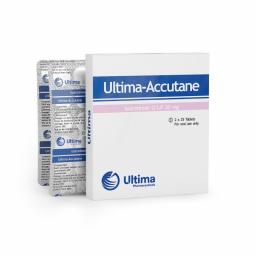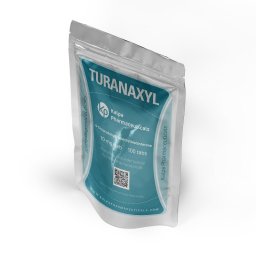Testicles (testes) are the male gonads. Two of these stuctures are found in the scrotum where they produce the male gametes, the spermatozoa, and the male hormone, testosterone. The testes are suspended from the body by the spermatic cord which contains the ductus deferens or vas deferens, testicular blood and lymph vessels and nerves.
Anatomy & Histology
The testicles are paired spheroid structures, (4 to 5 x 2.5 x 3 centimeters, 10.5-14 grams) housed in the scrotum with the dual function of producing sperm and hormones. The scrotum serves as a protective covering and serves to maintain the testicular temperature about 2 degrees below abdominal temperature. Each testicle is covered by a sac derived from the peritoneum acquired during its descent from the abdomen during fetal development. This sac has a an outer parietal layer and an inner visceral layer. Under this, each testis is surrounded by a thick capsule of collagenous connective tissue. The posterior surface of the sac is thickened to form the mediastinum from which septa extend into the gland to separate it into about 250 lobules. Each lobule is filled with with 1-4 seminiferous tubules, connective tissue, vascular supply, lymphatic vessels nerves and interstitial cells.
Seminiferous tubules are the site where spermatozoa are produced and the interstitial cells make testosterone. Within each testis there are about 200 meters of seminiferous tubules accounting for 80-90% of the testicular mass. Seminiferous tubules have within them a lining of germ cells and specialized cells that partially envelop and nuture the developing gametes. These pyramidal nurse cells are called Sertoli cells and are joined to one another by tight junctions so that substances cannot freely flow from the blood to the tubular lumen. This testis-blood barrier is important to protect the sperm from antibodies in the blood. Sertoli cells surround developing germ cells and provide a nurturing environment for their development. FSH stimulates Sertoli cells to produce androgen binding protein into the lumen of the tubule. This provides for a high concentration of testosterone within the lumen as is necessary for spermatogenesis.
The rete testes, a meshwork of ducts, collect sperm from the seminiferous tubules. The sperm is transported to the epididymis by testicular fluid pressure, ciliary action and contraction of the efferent ductules. It takes about 12 days for a sperm to travel through the epididymis while spermatozoa are functionally and morphologically readied for the job of fertilization. Sperm leave the epididymis when called upon and travel through the muscular ductus deferens that propels sperm forward by peristaltic contractions into the ejaculatory duct. Glandular secretions are added by the seminal vesicles, prostate and urethral glands prior to expulsion.
Spermatogenesis
A dozen or more different types of germ cells have been described in males. It takes about 74 days to complete the spermatogenic cycle; from spermatogonia to spermatozoa. Spermatogenesis occurs in an orderly fashion progressing from spermatogonia at the seminiferous tubule basement membrane to spermatozoa at the tubular lumen. Spermatocytes are derived from spermatogonia via mitotic division. Through meiotic division, the spermatids are formed containing a haploid (1X) number of chromosomes (23). Early spermatids lose much of their cytoplasm and undergo morphological changes more characteristic of mature sperm.
Mature sperm are highly specialized cells composed of a head, neck and tail region. Sperm have a head made up of DNA as condensed chromosomes, an enzyme cap (acrosome) that enables the sperm to enter the egg at fertilization, a neck containing numerous mitochondria and a flagellar tail that confers motility to the cell. Mature sperm are released into the lumen of the seminiferous tubule but are still not ready for the big game. They become mobile during their passage through the epididymis and are further energized by spending time in the female reproductive tract in a process called capacitation.
Spermatogenesis is negatively impacted by heat. The testes are normally kept below abdominal temperatures by scrotal sweat evaporation and counter current heat exhange in the testicular blood supply. Artificial temperature increases caused by wearing tight clothes or extended daily hot baths may reduce sperm counts dramatically in some cases. But the effect is not consistent and therefore is not a good method of male contraception.
Vasectomy
The most sure means of birth control in the male is the bilateral removal of a segment of the vas deferens. This procedure doesn’t effect ejaculation in but the semen doesn’t contain sperm. This means of sterilization does not alter the sex drive. When two successive tests for sperm in the ejaculate have been negative the procedure can be said to be successful. Vasectomies have been reversed with some success.
Hormonal Regulation
The hypothalamus within the brain secretes gonadotropin-releasing hormone (GnRH) in a pulsatile fashion beginning at puberty. GnRH travels in a portal system to the anterior pituitary where the luteinizing hormone (LH) and follicle stimulating hormone (FSH) are released into the systemic circulation. LH stimulates the Leydig cells of the testis to produce and secrete testosterone. The elevated testosterone provides negative feedback to the anterior pituitary and hypothalamus causing decreases in GnRH and LH release. FSH stimulates the Sertoli cells to produce androgen-binding protein and a protein hormone called inhibin. Inhibin travels in the blood to the pituitary where it inhibits the secretion of FSH. Testosterone, dihydrotestosterone and estradiol are also capable of inhibiting FSH secretion. To learn more about endocrinology and hormone action refer to e-Homone.com.
Testicular Pathology
Hydrocele
This most common cause of scrotal enlargement is caused by an accumulation of clear or straw colored fluid. It can be idiopathic, but also occurs following an inflammation of the testis, epididymis, injury or neoplasm. Treatment is by aspiration or incision, if the hydrocele is large and uncomfortable.
Varicocele
This dilation of the testicular venous supply, resembling a varicose vein, usually affects the left side in men between 15 and 25 years of age. Varicocele can cause subfertility because of the added warmth. Both motility and numbers of sperm are decreased and surgical ligation of the internal spermatic vein is performed in extreme cases or to increase fertility. However, varicocele usually doesn’t require any treatment.
Torsion of the Testis
Manifestations of this infrequent anomoly are sudden onset of severe pain in the testicular area that is not relieved by rest or support. It occurs most commonly in adolescence following physical exercise. Pain and testicular enlargement results from a twisting of the testis which cuts off the blood supply. Scrotal edema, testicular tenderness as well as nausea and vomitting may occur. If the twist cannot be reduced, immediate surgery is indicated to preserve fertility.
Cryptorchidism
Cryptorchidism is the incomplete or improper descent of the testis on one or both sides. The cause is unkown but it may be due to testosterone deficiencies, narrowed inguinal canal, shortened spermatic cord, or adhesions in the pathway. Correction on the condition is necessary to avoid sterility. There is a direct relationship between cryptorchidism and testicular cancer.
Testicular Tumors
Testicular tumors are the most common cause of testicular enlargement, are typically malignant, and often metastasize before diagnosis. Testicular cancers occur primarily between the ages of 15 and 30 years and 95 percent arise from germ cells. Benign testicular tumors usually arise from the interstitial or Sertoli cells. Diagnosis is by palpation. A biopsy is necessary to determine malignancy. Chemotherapy, radiation and orchiectomy are potential treatments.
Orchitis
Inflammation of the testes most commonly occurs as a complication of mumps but may be a result of trauma or be acquired from an infection spread from the genital tract. Symptoms are pain, swelling, chills and fever. Treatment includes bed rest, antibiotics, cold compresses and genital support.
Epididymitis
Symtoms of this inflammation of the epididymis are pain, chills, fever, and malaise with pronounced scrotal swelling. It occurs when disease-causing organisms reach the epididymis. Treatment includes bed rest, sitz baths, scrotal elevation and appropriate antibiotics.
Jock rash
Jock rash or jock itch is a fungal infection of the skin of the groin area, perhaps including the skin of the scrotum.
Best Steroid Products Online
Susta 500 (2ml)
|
Proscar
|
Turanaxyl
|


